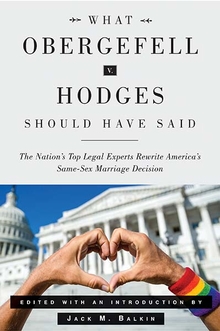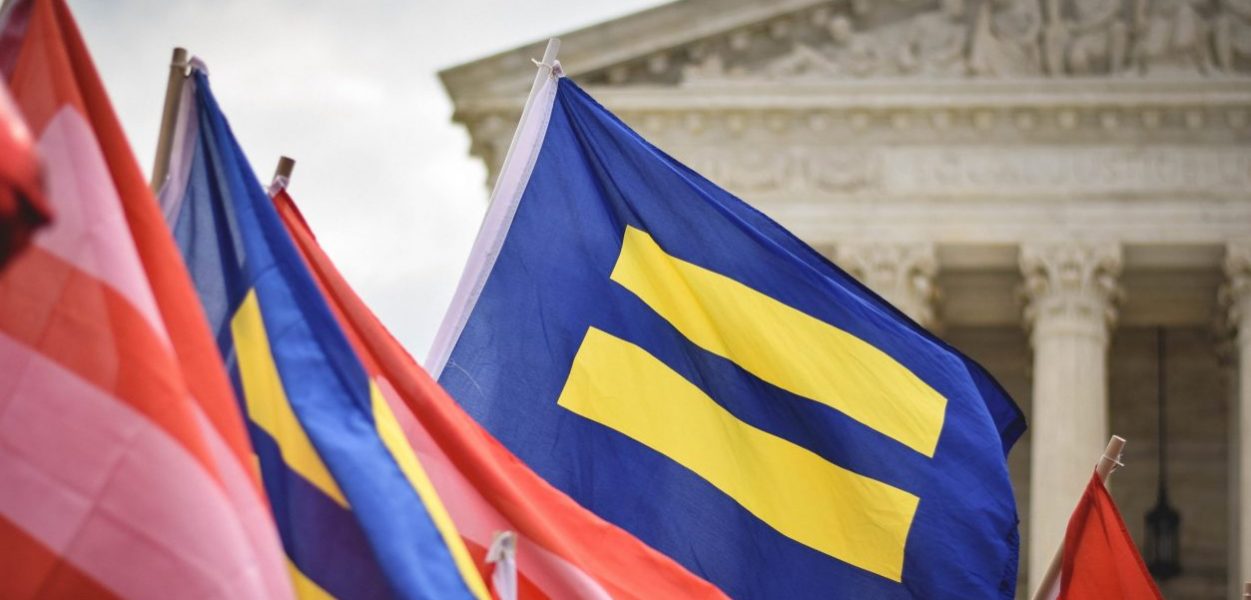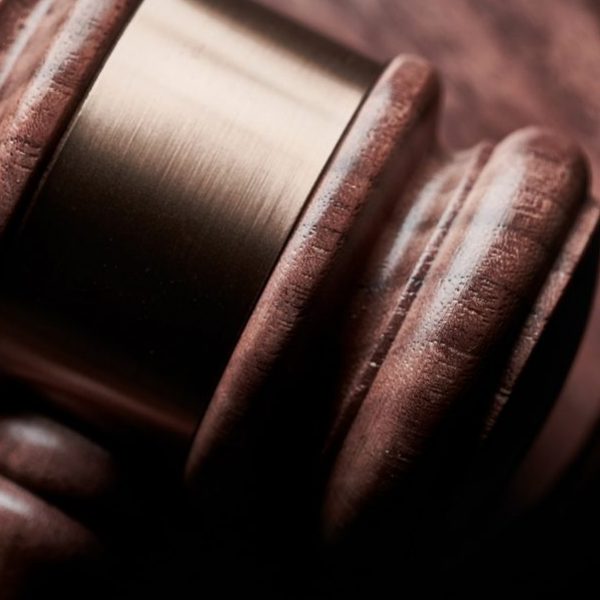The Death of DOMA
Jack M. Balkin—
The two important federal challenges brewing in the courts—the struggle over California’s Proposition 8 and the challenge to the federal Defense of Marriage Act—converged on the Supreme Court’s docket in the election year of 2012.
In the California case, Hollingsworth v. Perry, the Supreme Court held 5–4 that the Proposition 8 defenders lacked standing to defend the amendment in federal court. The lineup of justices did not fall along the usual ideological lines: Chief Justice Roberts and Justices Ginsburg, Breyer, Scalia, and Elena Kagan held that the intervenors lacked standing; while Justices Kennedy, Sonia Sotomayor, Thomas, and Alito dissented and would have heard the case. Court watchers speculated that the some of the justices who probably supported marriage equality did not think that the time was yet right to require all of the states to recognize same-sex marriage. The result of rejecting the intervenors’ appeal on standing grounds was that the district court’s decision (in which all of the parties did have standing) remained in effect. The district court’s decision required recognition of same-sex marriage in California, and since the political branches (now controlled by liberal Democrats) agreed with the result, it was quickly implemented. Boies and Olsen’s excellent adventure had not produced the nationwide declaration of marriage rights that they sought, but it had achieved marriage equality in the country’s largest state.
The Court did reach a decision on the merits, however, in United States v. Windsor. By a 5–4 margin, it struck down section 3 of the Federal Defense of Marriage Act, which forbids federal recognition—and thus federal benefits—to same-sex marriages.
Once again, Justice Kennedy wrote the decision. He argued that DOMA violated the Fifth Amendment’s Due Process Clause. Since the 1954 decision in Bolling v. Sharpe, which desegregated the District of Columbia public schools, the Supreme Court has held that the Fifth Amendment’s Due Process Clause requires the national government to protect equal rights in the same way that the Fourteenth Amendment’s Equal Protection Clause binds the states. Thus, Windsor was based on the principle of constitutional equality.
Yet, once again, Kennedy’s opinion got to that result in an unusual way. Kennedy’s equality argument was also a federalism argument. Regulation of marriage and family law was a traditional state prerogative. In this case, New York had decided that same-sex couples could marry and should be treated the same as different-sex couples and should be given equal dignity and respect. Th at was New York’s choice. Ordinarily the federal government would use whatever definition of marriage the states decided on. In DOMA, however, the federal government departed from its traditional practice of relying on state definitions of marriage. DOMA’s “avowed purpose and practical effect . . . are to impose a disadvantage, a separate status, and so a stigma upon all who enter into same-sex marriages made lawful by the unquestioned authority of the States.”The “essence” of DOMA, Kennedy argued, was to “interfere[] with the equal dignity of same-sex marriages, a dignity conferred by the States in the exercise of their sovereign power.”
By withdrawing federal benefits from same-sex but not different-sex couples, DOMA “diminish[es] the stability and predictability of basic personal relations the State has found it proper to acknowledge and protect” and “places same-sex couples in an unstable position of being in a second-tier marriage.”Making special rules that burden only same-sex marriages “demeans the couple, whose moral and sexual choices the Constitution protects . . . and whose relationship the State has sought to dignify. And it humiliates tens of thousands of children now being raised by same-sex couples” and imposes special financial and logistical burdens on them.DOMA involved “a bare congressional desire to harm a politically unpopular group” and therefore violated the principle of Romer v. Evans. “[N]o legitimate purpose overcomes the purpose and effect to disparage and to injure those whom the State, by its marriage laws, sought to protect in personhood and dignity.”
Windsor raised as many questions as it answered. Was Windsor based on animus toward gays, and if so, what kind? Many of DOMA’s supporters in Congress did say openly homophobic things during the debate over the bill; but the bill was also supported by many liberal Democrats, and it was signed into law by Bill Clinton, who was, up to that point in history, the president most sympathetic to gay rights. Justice Kennedywas probably not accusing Clinton or his liberal Democratic allies ofdeliberately seeking to harm same-sex couples, much less of being homophobesor bigots. Was he saying that liberal Democrats and Clintonhad been compelled to vote as they did because of widespread socialbigotry?
Perhaps the most plausible reading of Windsor had nothing to do with the actual psychological motivations of the people who voted for DOMA in 1996. Rather, the point was that the world had changed since 1996. In the world of 2013, DOMA no longer seemed to have any legitimate purpose—other than expressing moral disapproval of homosexuality, which Lawrence had ruled out of bounds. In 1996, same-sex marriage was still largely hypothetical—one state was on the brink of recognizing it. But in 2013, when a growing number of states allowed same-sex couples to marry, DOMA arbitrarily caused these same-sex couples—and their children—significant harm with no obvious benefit. That made it unconstitutional.
Three justices wrote dissenting opinions. Chief Justice Roberts tried to make lemonade out of lemons. He pointed out that because Kennedy’s language depended so heavily on federalism ideas, it could not possibly support a federal constitutional right to same-sex marriage against the majority of states that still refused to recognize same-sex marriage. Justice Alito warned that same-sex marriage was an untested experiment based on a controversial idea of what marriage was and that it was perfectly rational for Congress to wait and see how the experiment developed before granting it federal recognition. Justice Scalia wrote another of his impassioned dissents. He argued that the case should have been dismissed for lack of standing; Windsor got her tax refund from the district court, and since the Obama administration refused to defend the statute on appeal, that should have been the end of it. “We have no power to decide this case. And even if we did, we have no power under the Constitution to invalidate this democratically adopted legislation. The Court’s errors on both points spring forth from the same diseased root: an exalted conception of the role of this institution in America.”
From What Obergefell v. Hodges Should Have Said by Jack M. Balkin. Published by Yale University Press in 2020. Reproduced with permission.
Jack M. Balkin is Knight Professor of Constitutional Law and the First Amendment at Yale Law School. He is the founder and director of Yale’s Information Society Project and directs the Abrams Institute for Freedom of Expression at Yale.
Further Reading:



























